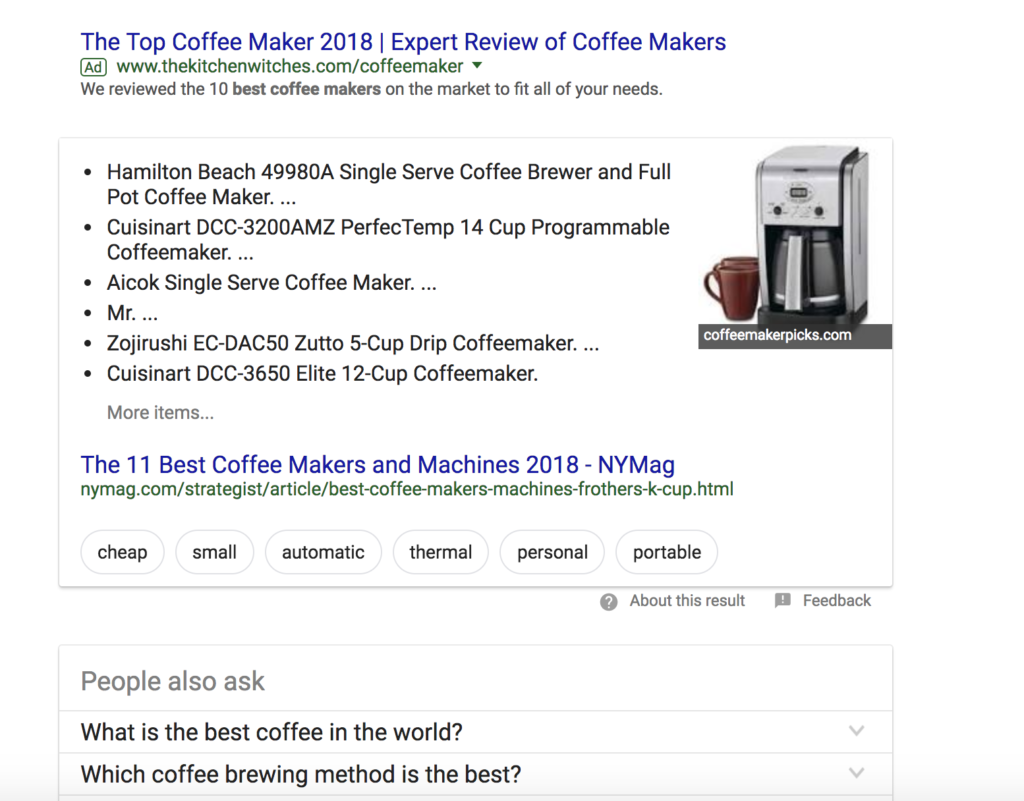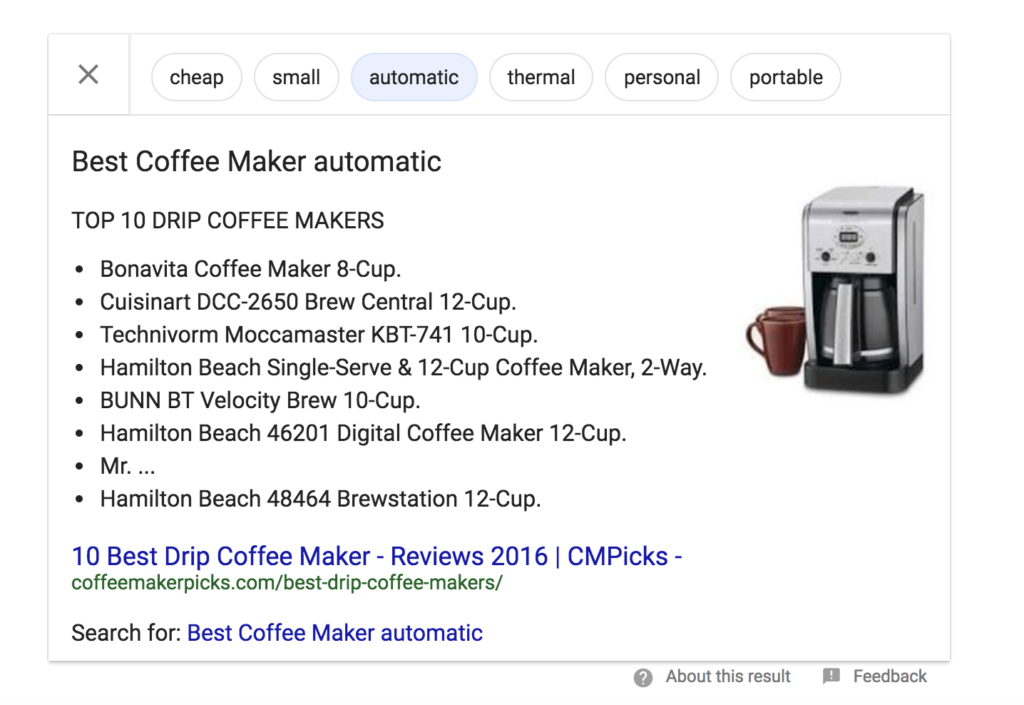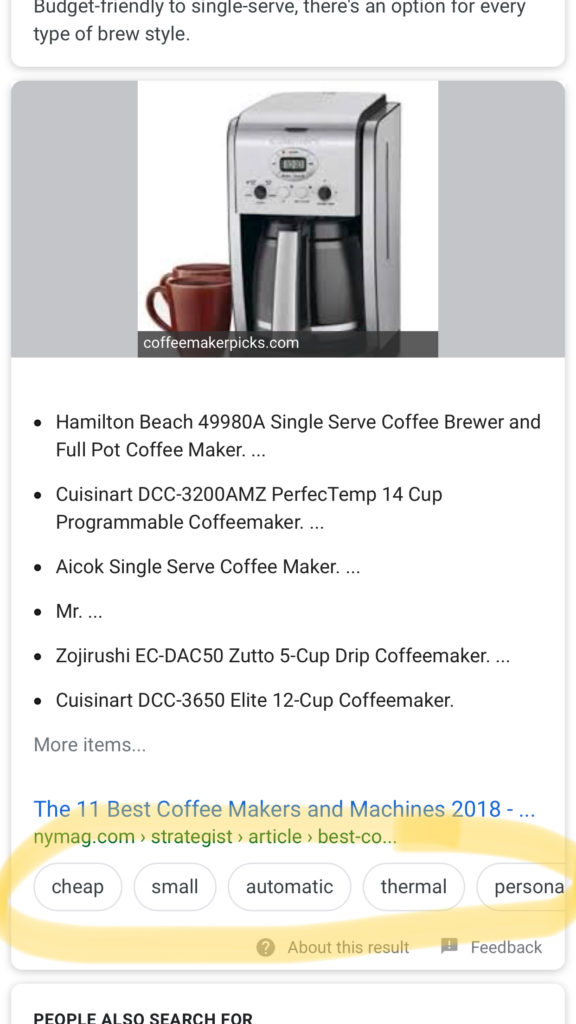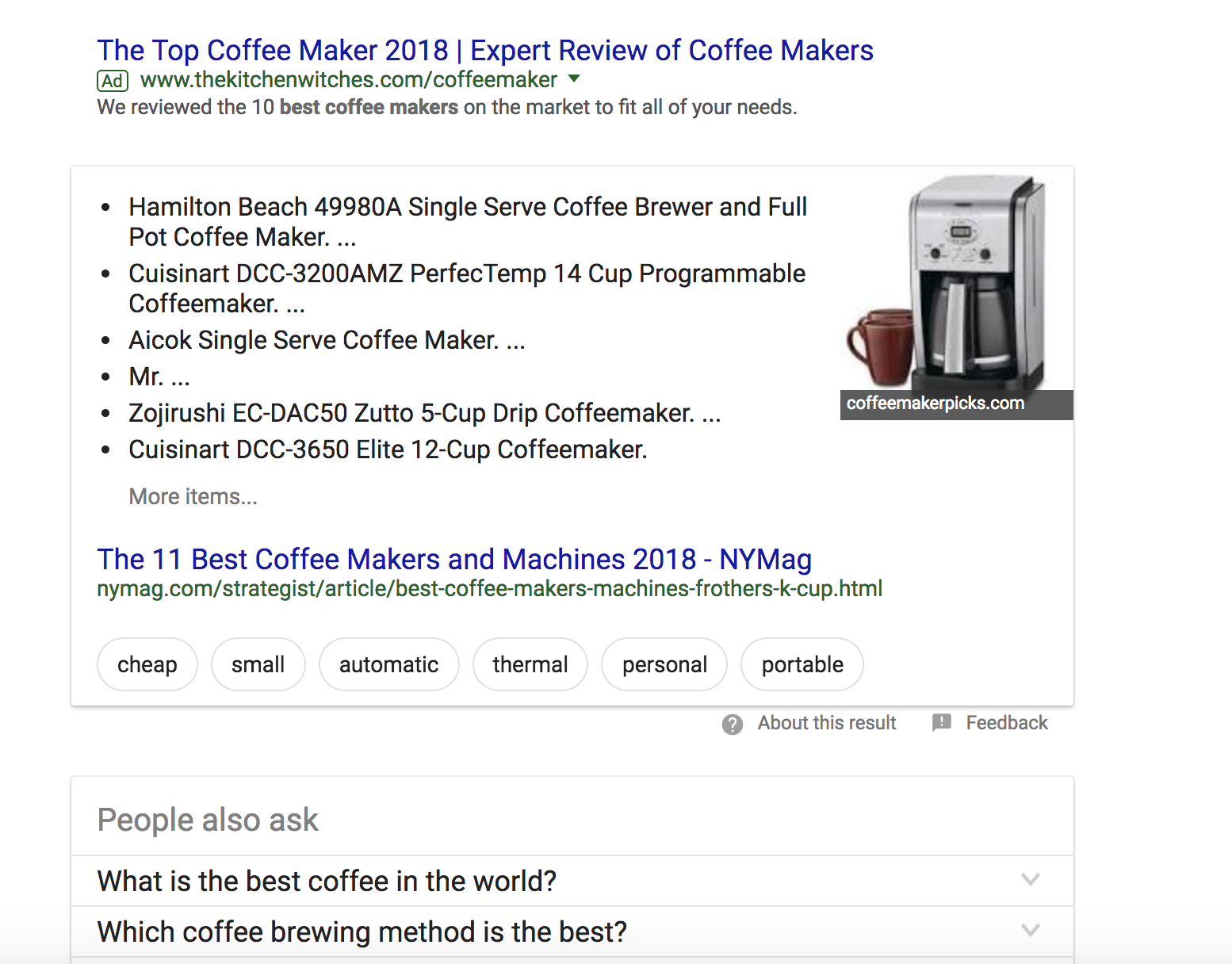Another Universal Search update? Featured snippets get a facelift
Looks like Google is at it again. This time taking aim at Featured Snippets. adding “refinement bubbles” that allow users to narrow in on their search.
Let’s start by looking at how we got here and where we’re going.
In 2014, Google launched a search results feature called Quick Answers. This is the precursor to what we’re now seeing as Google Featured Snippets. Quick Answers gave users a high level answer to a search query that didn’t require the user leaving the SERP. Queries such as “current time in London” or “100 Euros to USD” resulted in an answer at the top of the page. The answer displayed a link to the source, ahead of all other search results. Most users immediately saw the result they wanted. For those wanting more, it was simple enough to scroll down the SERP and investigate further.
In 2016, Quick Answers was rebranded to Google Featured Snippets. Along with the new brand they also rolled out new features. First was site owners ability to withdraw their website from the functionality. Google also clarified that snippet results were determined programmatically and site owners had no ability to opt in pages to be considered for Featured Snippets results. With Quick Answers, queries that resulted in a step-by-step answer appeared to be most likely to receive a Quick Answer box. With the new Featured Snippets, many more types of queries resulted in addition to the snippets. Though the scope broadened, site owners were still not able to opt in or pay to appear in Featured Snippets.
Recently, more updates were announced for Google Featured Snippets and are rolling out across SERPs. Let’s take a look at what is changing.
What’s new for Google Featured Snippets in SERPs?
Google Featured Snippets started new features being texted in September of 2017. At the end of January, Google began rolling out new changes more broadly. Now, when you search for “best coffee maker,” for example, you will notice there is still a featured snippet, but also refinement word bubbles at the bottom. These words represent more search detail options or variations on your search. The example below shows “cheap,” “small,” “automatic,” “thermal,” “personal,” and “portable” appear to further refine your search.

What you notice when clicking onto an option is that the snippet changes dynamically to match the variation you click.
Clicking the “personal” option reveals the following featured snippet:

While clicking onto the “automatic option reveals this snippet:

You’ll also notice that featured snippets are present on mobile searches. The featured snippet update actually rolled out on mobile first, finding its way to desktop searches just recently. Get updates on what other changes are coming with the Mobile First Indexing.

What does the Featured Snippet update mean to marketers and SEOs?
While we are still figuring out what the refinement bubbles and other featured snippet updates mean for B2B and B2C marketers, especially those in e-commerce, what we are certain of is that Google is keeping more content within the SERP. This means fewer consumers are navigating directly to our content and this is likely to continue.
If the consumers of our content no longer need to visit our page to get the answers they seek, how much harder is it to determine attribution? What happens when we don’t know the keywords that users are searching that pertain to our brand nor the information they’re consuming that’s in a snippet that we may provide?
Also on that same track… If Google continues to absorb content directly into the SERP, how much space will be left for organic search results, what portion will go to paid, and how will participation in universal search elements be determined? What information can we garner from the setup and suggestions that Google is providing? (We’re already working on that at DemandSphere!)
I see this as an opportunity personally for marketers to take on the challenges that the changing SERP landscape holds. We are seeing that mobile first and voice search shake up how we understand our consumers and their behavior. This is no different. They always wanted answers and suggestions, Google is simply finding a way to provide them within the construct of their playing field.
At DemandSphere, we’re already looking at ways to integrate these new elements into the platform that we provide SEOs and content marketers. We have a lot on the horizon with mobile, local, voice, and universal search. We already track universal search elements within the dashboard for our users – showing you if universal search elements like featured snippet, knowledge panel, video, shopping, etc. appear on the SERPs for your keywords.
If you need a hand navigating the waters or want to check out the platform to get ahead of these changes, just let us know!

